Nutrition in burns
A very effective factor in accelerating the healing process in burn patients is proper nutrition. That is, if the nutrition of the burned patient can be controlled, the healing process of the wound can be accelerated and the patient’s treatment costs can be reduced. An important consideration for burn patients or their families is how they can speed up the wound healing process. In this case, we recommend using zinc or mineral zinc, which has a significant effect on wound healing. The most important sources of zinc are raw nuts such as pistachios, walnuts, almonds and hazelnuts or meats such as red meat, chicken and fish. Our preference is to use whole foods through oral feeding, but if the patient is unable to feed orally, the nutritionist should prescribe zinc supplements in a specific dose.
Energy requirements in burn patients
The amount of energy required in burn patients is determined by several factors such as basal metabolic rate, body burn percentage, respiratory support, infection, sepsis, multiple organ dysfunction, etc. The energy received by burn patients can be different. Some studies recommend a diet containing at least 50% of calories from carbohydrates, 25% from protein and 15% from fat. Burn patients are particularly sensitive to lipids, and this sensitivity has been shown to adversely affect hospitalization and duration of infection. Because of this apparent sensitivity, it is recommended that burn patients control the amount of non-nutritive lipids, including the pain reliever propofol, which ranges from 15 to 30 g/day in adults.
Determining the effect of dietary macronutrients on burn injury
Further studies are needed to determine the effect of dietary macronutrients on burn injury, to understand the precise role of macronutrients in the treatment of acute burn and trauma patients, but in general, a high-carbohydrate diet is recommended. In the treatment of burn patients, low protein and fat are used.
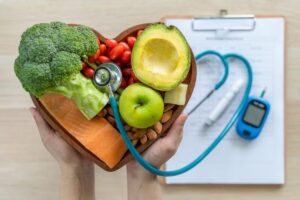
تغذیه در سوختگی
Carbohydrates
Carbohydrates are the main source of energy in food. Glucose, the main metabolic fuel in all cellular components, is a wound healer and the best non-protein energy source for heat-injured patients. In fact, carbohydrates are great for maintaining protein. Certain tissues such as burned tissue, nervous tissue and blood elements inevitably consume glucose. Keep in mind that excessive diet and high blood sugar can have a negative effect on burn treatment. A high carbohydrate, moderate protein and low fat diet is generally recommended in the treatment of burn patients.
Increase in blood sugar due to carbohydrate consumption
Elevated blood sugar levels can disrupt blood flow to the wound and thus reduce the amount of oxygen and micronutrients needed for wound healing. In addition, hypoglycemia-induced immunosuppression is associated with poor healing of burn wounds. Chemotaxis and phagocytosis are essential processes for wound healing, both of which are impaired by hyperglycemia. As a result, to achieve the most suitable conditions for burn healing, it is necessary to maintain blood sugar levels at normal levels. Therefore, proteins and lipids as well as carbohydrates should supplement the energy needs of burn patients.
Protein
When we see a burn patient, we measure the level of albumin, which is the main protein in the blood. If the patient’s blood albumin level is low, he should be given a protein source. It is better to know that burn patients lose a lot of water and protein tissue (in the burned area) depending on the level and degree of the burn. Therefore, it is very important to maintain the protein level in the patient’s body at an appropriate level to improve the patient’s condition. Depending on the condition of the patient and whether he can have oral nutrition or not, we take a prescription for him. If the patient can chew solid food, the first and best choice for him in terms of high-quality protein is whey protein, which is abundant in whey. Egg whites, red meat, chicken and fish are recommended options for burn patients. After him, soy protein is on the next level.
The difference between animal protein and vegetable protein in the treatment of burns
Animal protein is more effective in treating burns than vegetable protein. Because glycogen, as the primary source of energy in stress conditions, only provides the need for less than one day. Skeletal muscle protein is considered an important source of energy. Along with increased metabolism, protein is also lost during burning, which is characterized by increased urea production. Nutritional support with supplemental nutrients, either orally, through tube or intravenous feeding, can reduce nitrogen loss. Losing 30% of the body’s protein leads to a decrease in muscle strength, which leads to impaired respiratory function, the immune system, and ultimately death. Several diseases increase the rate of protein metabolism, one of the worst of which is inflammation. Recent evidence supports the use of a protein diet in burn patients, and it has been suggested that 20–25% of total calories come from high biological value (HBV) protein. 2 grams of protein per kilogram of body weight is recommended for burn patients.
Burnt children’s protein needs
Burned children’s protein needs are usually higher than the RDA, and 2.5 to 3 grams per kilogram of body weight is recommended during treatment. Of course, any intake of protein supplements in burn patients leads to an increase in urea production without improving or building muscle protein. In burns, the use of certain amino acids can have a pharmacological effect in improving the patient’s condition.
Fats
Compared to starvation conditions, in which the body prevents the body from breaking down fat and producing sufficient energy by breaking down fat and producing ketone bodies, the body’s ability to use fat as an energy source during combustion is significantly reduced. is reduced The diet of burn patients is a low-fat diet, but the composition of consumed vegetables is more important than their quantity. According to available reports, adding fish oil to the diet of burn patients improves their immune system function. When it comes to synthetic oils and MCTs, they can increase liver protein synthesis and decrease protein and energy metabolism. Elevated blood sugar levels can disrupt blood flow to the wound, thereby reducing the amount of oxygen and target elements necessary for wound healing.
Glutamine
Glutamine is an important nutrient for many cells, especially intestinal cells and white blood cells, because glutamine is used as an energy source. Recent studies have shown that the use of glutamine in the diet of burn patients shortens the healing period and heals the wound. However, at present, it is difficult to recommend a specific dose and exact course or duration of glutamine administration in burn patients.
Arginine
Arginine is considered a conditional amino acid when burned. Arginine has important properties: strengthening the immune system, reducing the vulnerability of wounds, increasing the production of collagen, growth hormone (the role of dilating blood vessels), etc. (the permissible dose of arginine is 3 grams per day).
Vitamin C
Vitamin C is a water-soluble vitamin that plays a role in collagen synthesis and immune system function. Collagen is the main fibrous tissue protein of connective tissue and skin. During burns, people’s need for vitamin C increases, so children under 3 years old with 10% burns need 500 mg of vitamin C per day in the form of 250 mg twice a day. But adults and children over 3 years of age with burns greater than 20% need 1000 mg of vitamin C per day or 500 mg of vitamin C twice a day. At low doses, the bioavailability of vitamin C is almost complete (89% for every 15 mg of vitamin C), but at high doses, e.g. 1250 mg, reaches below 50%. Therefore, it is recommended to give vitamin C in divided doses. Consuming more than one gram of vitamin C per day can also cause the formation of oxalate stones.



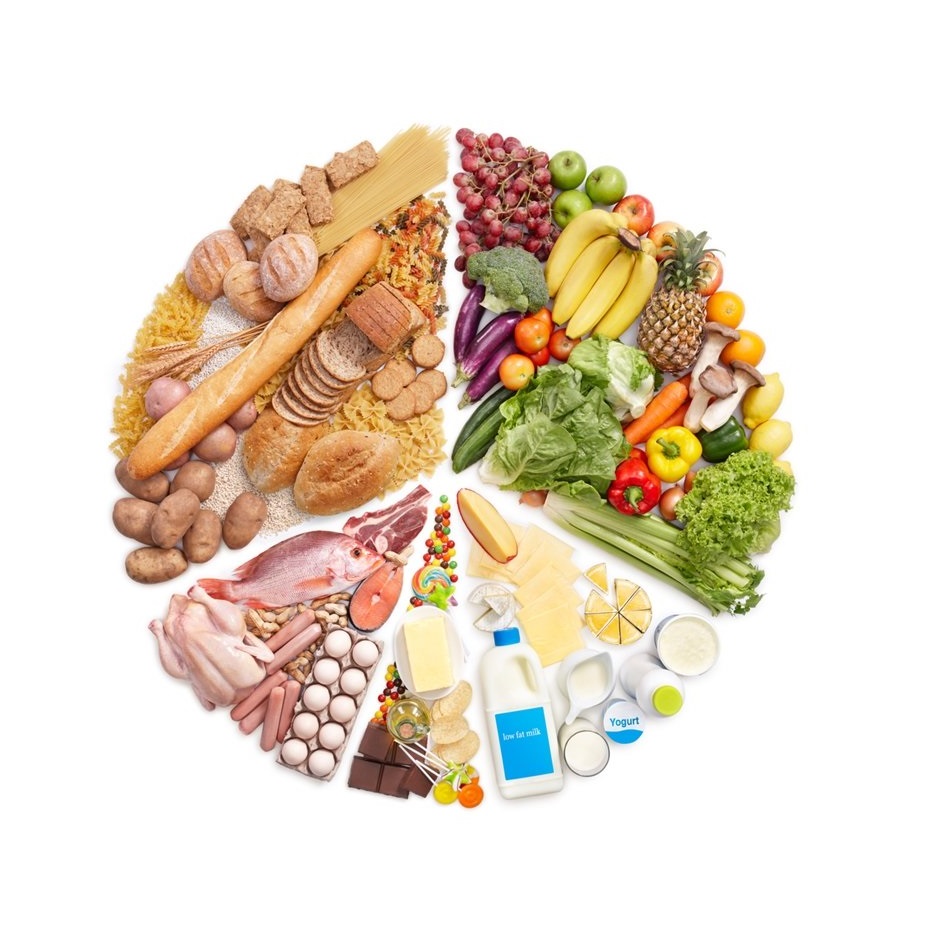
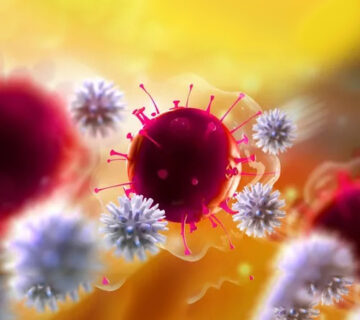
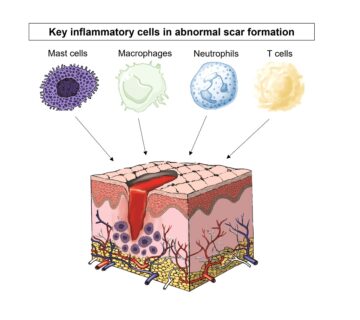
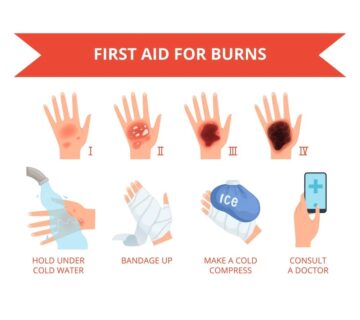
بدون دیدگاه